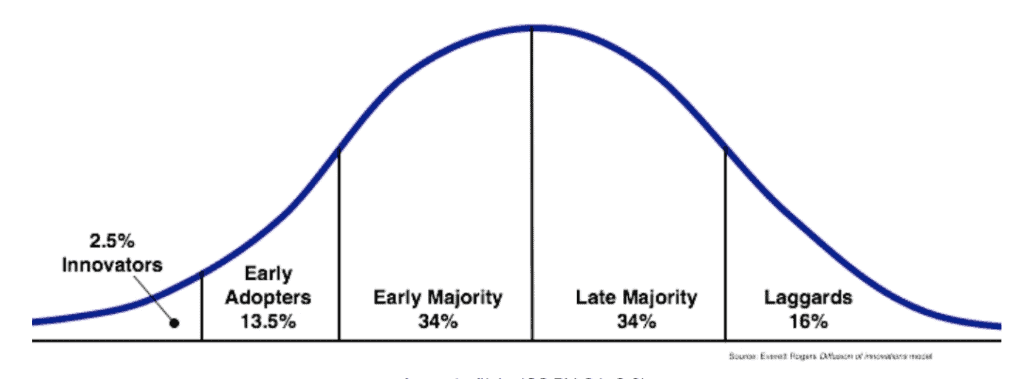I originally published Content Shock in December 2014, and it’s as relevant today as it was then, possibly more so. I’m republishing it today, nearly ten years later, with a few notes on what I’m seeing in 2024. (Scroll down to see the 2014 article.)
2024: From Content Shock to Market Shock
When Mark Shaefer introduced the idea of content shock, he couldn’t have been more precient. Over the last decade, technology advances, automation, and AI have made it easier than ever to create and publish content. The result? The average consumer is bombarded by as many as 10,000 marketing messages a day.
That’s where the economics of attention come into play.
Time is a limited resource. Even if people wanted to consume all the content that was created for their specific needs, they wouldn’t have the time.
Limited time means less attention. Which means we’re competing with hundreds of thousands of other businesses for every second our audience can afford to give us.
Looking back, it’s clear that this day was coming. But there’s more.
The Maturity of the Digital Marketplace
This idea of too much content and too little attention intersects with another trend I’ve been watching since about 2015 — the maturity of the digital marketplace.
To understand what I mean by this, you need to understand the bell curve theory.
The bell curve theory states that every new technology, strategy, or idea will have innovators, early adopters, early majority, late majority, and laggards.
Early adopters will see tremendous opportunity. Late adopters and laggards will be stressed by the change. And once adoption is complete, life goes back to normal.

We saw that play out in the world’s transition from analog to digital. Mark Zuckerberg became the architect of social media. Jeff Bezos radically changed the way we buy. And early internet marketers got rich teaching the digital strategies that worked for them.
Most of us didn’t get rich, but we did enjoy a period of rich opportunity. We could start a business with minimal startup costs. Marketing was easy. Low competition meant we could publish a button and get a 100% response rate or publish 100-word posts and gain a loyal following.
Once adoption reached the top of the bell curve, there was more competition. That’s when Shaefer saw content shock and I began noticing that marketing in general was becoming more difficult.
Today, the world has completed its digital transformation. The pandemic pushed even the laggards to adopt a digital lifestyle. And with laggards onboard, we’re back to status quo.
“Digital marketing” is just plain “marketing,” and it’s as competitive as it was before the internet — which means content shock is just the tip of the iceberg. We’re facing market shock, and the only way we can possibly win is to raise the bar.
Learn more in my new guide, Gain & Retain.
December 2014: Content Shock and How It Will Impact You
It’s that deep sigh you give when you look to your left. And then you look to your right. And then you realize that you aren’t running the race with just one or two competitors anymore.
The little secret you had, the trendy, forward-thinking nugget of marketing wisdom you were using to slice and dice your competition is now considered “best practice,” which means everyone is doing it.
Content marketing seems to be everywhere. Every business is throwing another video, infographic, photo or semi-humorous joke online. Bloggers keep churning out content. And maybe, just maybe, the internet is going to blow.
Maybe it’s a joke to some, but the theory of “content shock” has just enough juice to keep marketers concerned at the very least.
Mark Schaefer, marketing blogger/author/podcaster, is legitimately concerned about the volume of content production tipping the scales and making content highly perishable as a marketing strategy. Even those who genuinely care about marketing are feeling the heat.
He theorizes that a reckoning is coming, a point where the demand of content is met with an overwhelming supply of words being shoved in front of a consumer’s face. With so much content available, how effective can it truly be?
Now here’s the rub…
If content creators can’t be as effective as before, it becomes more expensive for them to produce it. This creates a big problem for companies and here’s why:
- The way companies used to market doesn’t work in the new internet/social media/multi-media age, and they are desperately searching for alternatives.
- Content marketing works for them, and it shows.
- Content marketing is relatively inexpensive compared to other types of marketing, so they figure they can jump into the race and win without even trying.
You can understand why. Since the early 2000s, content marketing has been very effective. So much so that almost nobody wanted to bother with the question of how long this could last.
How long could content marketing affect your SEO? How long before the consumer audience becomes hip to the content marketing game?
Instead, brands are ramping up. More content. More posts on Facebook. More blog posts. More photos. More retweets. More interviews. More infographics.
If content really is king and so many of us are producing it, who is actually going to have time to read all of this stuff? The economics of attention are not in our favor.
There is some content being produced that is simply stellar; it’s smart, creative and effective at the same time. Unfortunately, there is the “fast food” content that doesn’t really do anything. A bunch of words, mashed together quickly for the sake of producing content.
A change is coming. But I don’t believe that content marketing will wilt and die. Brilliant as Schaefer’s theory is, there are several holes, and finding a solution for the future is easier than you think.
So how do we keep this content shock theory from becoming a reality?
Quality Matters
Let’s face it, the internet has made it easier than ever to put your message in front of your target audience. Easy can easily become lazy. We can’t slack on quality just because it’s easy to click, Publish.
It’s also important to write for your audience. Too many content creators are writing for Google’s alorithm. They’re trying to game the system, not help their customers.
And it shows.
If content shock is true, quality will matter more than quantity. We need to slow down and be more strategic. We need to create the best quality possible and create real value for our audience.
In a competitive marketplace, differentiation matters. And there’s no better differentiator than quality.
Embrace Personal before Publishing
Schaefer mentions that marketers need to be more human if we want to survive. “Publish or Perish” might not be the answer any more. Perhaps its “Personalize or Perish.”
Convice & Convert’s Jay Baer says it best…
“In our increasingly impersonal society, human contact is a highly valuable currency.”
The Internet can be a cold and technical place. But savvy companies everywhere are using it to maintain and/or form personal relationships.
By strategically publishing your content on the channels where your audience hanges out — blogs, videos, Skype, forums, social media, etc. — you can build an audience that truly cares about what you do.
You need to be human and transparent. Show up as a human, not a corporate entity.
That includes:
- Personal and instant replies to blog comments, emails and social interactions
- Semi-personal Twitter posts highlighting your product/service benefits
- Asking questions that start conversations and moderating discussions
- Organizing online contests and giveaways
Many times it’s not what is being published but who is doing the publishing. You can survive content shock by developing a deep relationship with people who know you, trust you, and appreciate the value of your content.
In other words, avoid content for content’s sake.
Case in point: You’d rip open a personal letter in the mail, while a common sales offer from your local dealership likely ends up unopened in the trash can. Personal is indeed better.
Keep It Relevant, Offer Solutions
When marketing success requires more than just showing up to the game, you can still win. You just might want to lace up those sneakers and stretch before you step on the track.
To make your content “better” and more polished, focus less on content creation and more on strategy and promotion.
Understand why you’re creating content, what you want to say, and to whom.
While marketing has become more sophisticated, human needs and desires are still just as strong as they were before the internet. People still seek pleasure, consumers still have pain, there’s still a desire to solve the problems in their lives.
Getting personal while communicating your solution will help you win the game.


